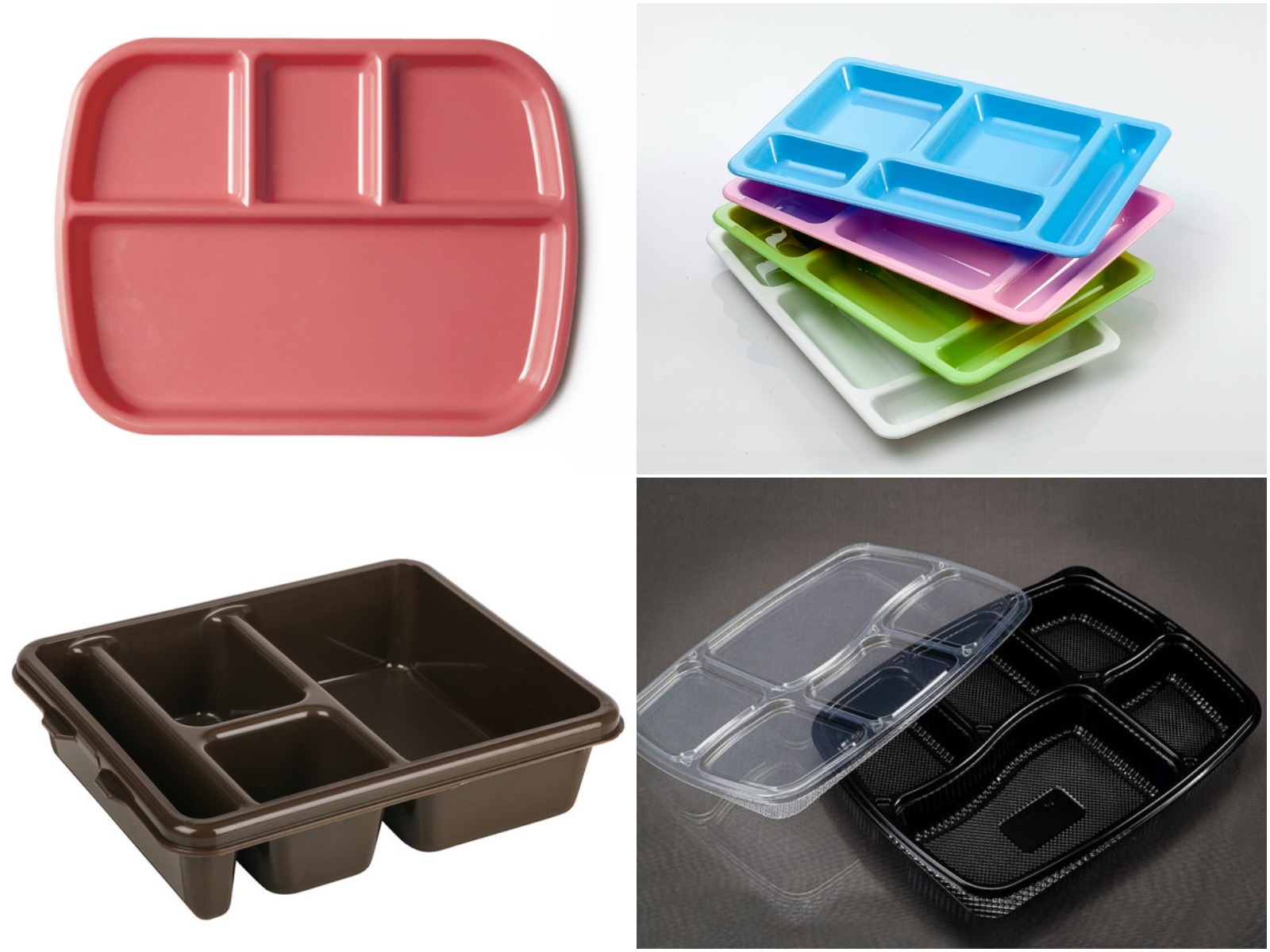
Anyone familiar with commercial kitchens would know that plastic is actually an essential material in the back-of-house.
A plastic tray can be used to serve, display and even cook food, contributing to its wide range of uses in the kitchen.
The following are some of the common plastics used in the manufacture of trays.
ABS
Also known as Acrylonitrile Butadiene Styrene, this material has been commercially available since the1950s. This plastic is known for having heavy resistance against breakage, scratches and stains. Its ability to withstand temperatures from -18°C (0°F) to 82°C (180°F) makes it a very durable material indeed. ABS is also dishwasher safe and has an average dry time. But it is not microwave safe.
This is a popular choice for many restaurants and foodservice operations because its cheaper than melamine and has high dirability.
Melamine
This is a type of plastic that can be commonly found in households. It came into prominence as a material that is used to make plastics and laminates back in the 1930s. Melamine trays are known for their durability and excellent stain resistance, not to mention that it can handle a wide range of temperatures.from -18°C (0°F) to to 100°C (212°F). This makes it a dishwasher-safe material., however it is not microwave-safe. As for drying times, they dry quickly.
Polycarbonate
First invented in the late 1800s by a German chemist, this is a plastic that was researched extensively but later discarded. When the research was picked up again, it went global and polycardonate grew in popularity. It has a very high resistance to breakage, a moderate resistance to staining and can scratch easily. It can handle temperatures within the range of -40°C (-40°F) to 100°C (212°F).
Due to this, they are ideal to be used in freezers or high temperature environments. These trays are also microwave and dishwasher-safe. The drying time is somewhat in the middle.
Polypropylene
This was invented in the early 1950s and became immediately popular. It also spawned five other material variations. Polypropylene trays are known to have moderate resistance to breakage and scratches. It is also very stain resistant, with a temperature range of 0°C (32°F) to 82°C (180°F) and are microwave and dishwasher safe. Polypropylene trays have a fairly decent drying time and may require wiping to dry faster. Polypropylene is usually favored over melamine by many foodservice operators, thanks to it’s extreme durability and lower price.
Co-Polymer
This is a variation of polypropylene with a very high resistance to breakage, scratches and stains. It is suitable for use in the microwave and dishwasher as it is able to withstand temperatures from 4°C (40°F) to 99°C(210°F). However this means that it can't be put into the freezer. It is a great choice for getting the most bang for your buck as it costs much less than the others and yet so durable.



